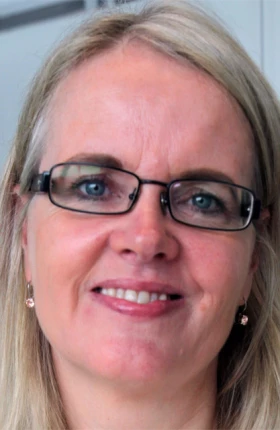This interview is a part of
TeBIT 2015 Executive Report: Digital Delivers
.
“The key to using COTS software is to avoid the customization that often results in exploding costs . . . . Once that happens, the benefits from standard COTS software erode.”
Cooperation and coordination aren’t just buzzwords for telcos, they are critical ingredients for success in a fast-moving, increasingly digital-centric market. To steer investments in the right directions, and to set—and meet—the goals that can bring growth, IT and the business side need to work closely together. In the interview that follows, Thorsten Albers, chief technology and information officer of Hrvatski Telekom (or Croatian Telecom), discusses his company’s approach—and more.
The TeBIT data indicated that Hrvatski Telekom has significantly reduced its budget for both operations and investments. What does this mean from a business perspective and what are your priorities over the next few years?
Actually, we haven’t planned for a significant IT-spending reduction but for an IT transformation, with projects designed to upgrade our billing and CRM landscape—such as new CRM support tools for customer experience management. This activity has just started this year, so that would explain the low spending in 2014, but we’d expect an increase in 2015.
How do you see digital initiatives and big data affecting the business environment for telcos over the next few years? Do you expect operators to invest significantly in these areas?
I think digital and big data will change the telecom landscape—and the business—significantly. Perhaps the hype will dissipate, but these are areas that are here to stay, and I would definitely expect telcos to continue to invest in them. That said, the investments might be somewhat slower or less in big data. The reason, I think, is a lack of clear perspective on what can be done with it. Telcos have many ideas on what they can do with big data, but the overall picture on its full potential is still missing.
We saw that 100 percent of Hrvatski Telekom’s capital expenditures for digital initiatives is allocated to IT. What is the thinking behind this?
When we are talking about digital, it is important to understand that the drive for projects is coming from the business side, but the funding, resources, planning, project management, and delivery comes from IT. So for initiatives such as mobile apps, customer self-service processes, troubleshooting tools, process digitization, and so on, the business units will specify the requirements and IT will implement them in the day-to-day execution. Therefore, the budget is allocated to IT. But the strategy, business case, and requirements are all coming from the business side.
In TeBIT 2015, we saw many telcos investing in digital initiatives without having an overall digital strategy in place. What is Hrvatski Telekom’s approach?
For us, the focus around digital includes two business areas, which we refer to as e-company and e-business. The first focuses on internal digitization; the second concentrates on our external digital business. We have this dual focus because the requirements are different for each area. However, in both cases, the business side will determine how it wants to improve service digitization, implement the digitization of services, run process improvement, and so on, but the strategies to do so are developed together with IT. So the result is a joint strategic approach.
That raises another question: How do Hrvatski Telekom’s business and IT sides reach a concensus about how to focus investments? Do you follow specific processes or employ certain governance bodies?
We have introduced a governance body that coordinates investment priorities across all projects. It also manages the alignment among technology units, IT, the business areas, and the residential or B2B customer segments—and ensures a reasonable use of the budget. Most alignment takes place in individual interactions, but having this kind of governance becomes essential when the budget becomes tight. The process also can vary depending on the investment amount. For the largest projects, the governance body might reach out to the board to get a final decision or approval.
We also saw that among TeBIT participants, big data tends to be championed by the business side, while digital initiatives seem to be more of an IT topic. Does the role of the business side vary at Hrvatski Telekom?
We will see a few ideas driven by IT, but in the majority of cases, the activity is being led by the business side. This makes it critical to facilitate cross-functional cooperation among the business, IT, and finance units. In the past year, we have started many joint projects that have really helped to improve communication among these groups, which in turn has improved the way they work together.
Hrvatski Telekom seems to execute many tasks and responsibilities in-house. Why doesn’t the company outsource less relevant tasks and direct its focus toward strategic priorities?
Frankly, we haven’t felt any pressure to outsource. Our internal cost position has been quite good, as our in-house IT has been able—at least so far—to deliver the majority of services we need at lower costs than external vendors. We benefit, too, from having a highly educated staff, and as an alternative, we could use our own information communications technology (ICT) subsidiary. So in the end, the vendor landscape around us is not sufficiently attractive. In fact, there is only one area where we have outsourced: standard external-field services.
We saw from the data that Hrvatski Telekom seems to employ a large amount of commercial off-the-shelf (COTS) software. What are your experiences with it—and your future plans?
I don’t think we have reached an end state regarding COTS software. One of the aims of our IT-transformation projects is to replace self-developed software with commercial solutions. But the key to using COTS software is to avoid the customization that often results in exploding costs, not only because of the customization itself but also because of ongoing maintenance and support. Once that happens, the benefits from standard COTS software erode.
But how do you manage to keep customization low? How do you avoid rebuilding today’s business processes in COTS software?
One key lever is cost transparency. Since our projects are mainly business driven, the sensitivity to cost is well understood and triggers reconsideration of specific, costly customizations. Moreover, a telco of our size has a certain advantage, compared with much larger operators. With more units having specific requirements, they are more likely to need customization.
How do you ensure innovation and the exploration of promising IT trends? Some telcos have innovation labs that track new technologies so they can be the first movers; others wait to see how their peers proceed. What is the Hrvatski Telekom approach?
There is no general approach, per se; it really depends on the topic. For example, for network technology, we will be quite proactive, embracing high-speed networks and so on. For big data, meanwhile, we have launched several pilots with Croatian companies and implemented several applications, but we have not run a larger R&D effort in this area. One advantage we have when it comes to technology trends is the ability to interact with other Deutsche Telekom subsidiaries that have developed or successfully used interesting technologies. For example, we have taken ideas developed by T-Labs in Germany and adapted them for the Croatian market.
How important is a mature IT architecture for a highly productive and efficient IT function?
I believe that investing in a good IT architecture pays off. Otherwise, we would not be running our transformation projects. A main question I often ask myself is how comfortable do I feel with my current systems. The worst thing telcos can do is not take care of their IT landscape; if they ignore it, then they shouldn’t be surprised when the IT no longer works properly. I felt that we were on the verge of that happening, and we are not going to let it happen, so we are taking a big step forward with our transformation effort. It is essential to invest well, and invest right, in IT.
What are the critical challenges for telcos today? What do they need to tackle most?
One thing most telcos have to tackle is declining markets. A large portion of my day-to-day work is related to managing operational cost. I’d love to be focusing on developing innovative new services and bringing them to market—those are the areas that are fun for us. But the general market situation is still challenging, with both fixed and mobile now suffering from declining markets and prices. For many telcos, that decline has hindered their ability to invest. In the Croatian market, at least, we are not yet in a position to realize the full potential of converged offerings because the IT landscape does not yet support it. So there is less freedom to develop a new growth area. This is exactly what we are addressing with our transformation projects. At the same time, there is an opportunity for us in the Croatian market. It makes a lot of sense for us to serve the ICT market and gain traction in that area. This is an upside that we can unlock—if we play the game well.





